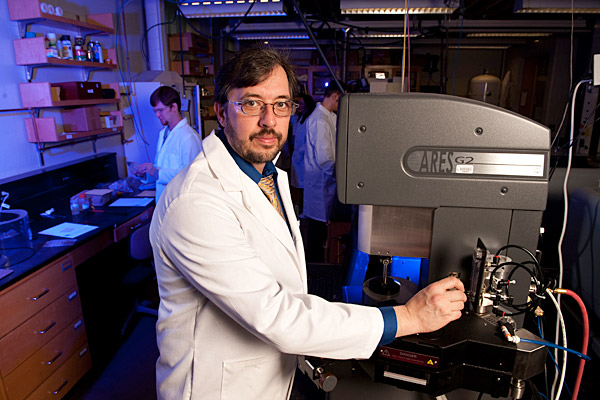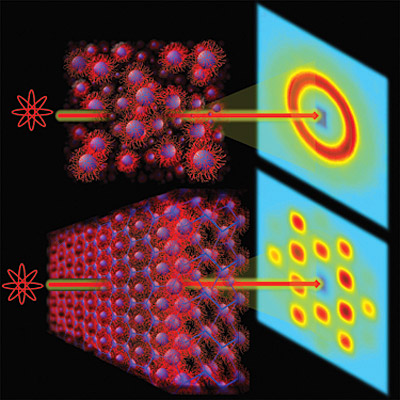Neutron scattering advance
UD engineers develop new instrumentation to study a fluid's microstructure
2:52 p.m., July 13, 2012--A team of researchers from the University of Delaware and two national laboratories have developed a new scientific instrument capable of studying the microstructure of complex fluids, polymers, nanomaterials and surfactant solutions using neutron scattering techniques.
The advance adds the ability for researchers to study time-dependent deformations (instances where fluids or solutions distort or change shape over time), a capability not previously available.
Research Stories
Chronic wounds
Prof. Heck's legacy
The work is a collaborative effort between UD's Center for Neutron Science and two of the world’s premier neutron scattering facilities: the National Center for Neutron Research at the National Institute of Standards and Technology (NIST) in Gaithersburg, Md., and the Institut Laue-Langevin in Grenoble, France.
According to Norman Wagner, Alvin B. and Julia O. Stiles Professor of Chemical and Biomolecular Engineering (CBE) at UD and director of UD’s Center for Neutron Science, studying time-dependent deformations provides engineers and scientists new ways to understand materials. It is also a valuable tool for studying how nanomaterials can be self-assembled into useful and highly organized structures.
“The instrument can be used to develop structure-property relationships for a broad range of materials useful for foods, consumer products such as sunscreens, shampoos, detergents, as well as creating new, highly ordered nanocomposites and complex fluids of critical importance for natural gas and oil production,” Wagner explains.
“It will also help us unlock the underlying principles of non-equilibrium thermodynamics of flowing systems, a topic of considerable scientific challenge for over the past century.”
The new technique, termed tOr-SANS (which stands for time resolved oscillatory rheology and small angle neutron scattering) and now available to the research community, enabled the research team to study the first measurements of time-dependent self-assembly and melting of a nanostructure under oscillatory flow.
Physical Review Letters, a top physics journal, recently featured the research team’s study findings on its cover. Co-authors on the study include UD engineers Wagner and Lionel Porcar; Carlos R. López-Barrón (ExxonMobil Chemical Company) and Aaron P.R. Eberle (NIST).
Wagner plans to plans to further develop the fundamental theory that can explain the observations made with this unique instrumentation under a new National Science Foundation grant with Antony Beris, Arthur B. Metzner Professor of Chemical and Biomolecular Engineering.
Article by Karen B. Roberts
Photo by Evan Krape












